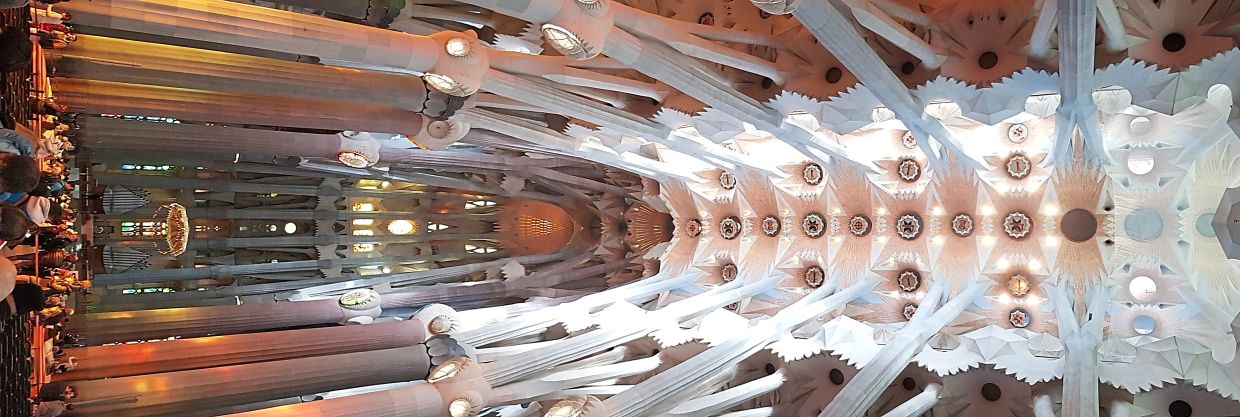The Guggenheim Museum Bilbao features a distinctive undulating titanium-clad design. Photo: 123rf
Amidst my busy schedule, I look forward to taking short breaks to travel and explore new places. The brief escape is essential to recharge and gain a new perspective on life. As an architect, I’m always eager to discover new lessons in architecture and design.
One vital lesson I’ve learned is that well-designed architectural buildings are not just aesthetically pleasing, but they can also be a significant driver of economic growth for a city. Just like Taylor Swift’s concert tours, architecture can have a massive economic impact if done right.
During my last trip to Spain, I witnessed firsthand the transformative power of architectural landmarks. I’d like to share with you three such impactful landmarks that stood out for me. They are truly worth visiting if you plan on travelling to Spain.
Basílica de la Sagrada Familia
The Basilica de la Sagrada Familia is an architectural masterpiece designed by Barcelona’s most famous architect, Antoni Gaudi. The construction of the basilica began in 1882 but was interrupted by Gaudi’s fatal accident in 1926. Despite intermittent construction over the years, the basilica remains incomplete till today due to multiple disruptive factors that include civil war, funding and the global pandemic.
Nonetheless, it has been recognised as a Unesco World Heritage Site for its unique architectural features that combine Art Nouveau, Catalan Modernism and Spanish Late Gothic design elements.
The basilica is world-renowned for its intricate facades, towering spires and sculptures that depict biblical scenes.
The interior is even more impressive and stunning. It features 39 columns that resemble trees branching out at the top, supporting the soaring ceilings.
The play of natural lighting and colour is breathtaking as the sun rays enter the large stained-glass windows and move through the day.
The Sagrada Familia is a testament to Gaudi’s intense creativity and innovation. It attracts over three million visitors annually, making it the most visited tourist attraction in Barcelona.
Montserrat Monastery
The Santa Maria de Montserrat Abbey, or Montserrat Monastery, is an outstanding Benedictine monastery located on the Montserrat mountain in Catalonia, Spain. Dating back almost a thousand years, the monastery has undergone several reconstructions throughout history. Today, it boasts an eclectic blend of architectural styles including Romanesque, Gothic and Renaissance. Positioned at an altitude of 725m, the monastery offers visitors breathtaking views of the surrounding rugged mountain peaks and lush valleys, making it an irresistible destination for those who appreciate architectural masterpieces and natural beauty.
Guggenheim Museum Bilbao
The Guggenheim Museum Bilbao in Spain is an excellent example of the “Bilbao Effect” due to its significant economic and social impact on the city.
Designed by Canadian-American architect Frank Gehry, the museum’s distinctive undulating titanium-clad design has transformed Bilbao into a global cultural destination.
Completed in 1997, it quickly became a top tourist attraction, drawing nearly four million visitors in the first three years, resulting in an economic impact of approximately €500mil (RM2.5mil).
The expenses spent by visitors on hotels, restaurants and transportation generated about €100mil (RM509mil) in taxes, which exceeded the cost of building the museum.
Today, the area around the Guggenheim is a highly valuable and desirable landscape, with upscale hotels, residential buildings, restaurants and green spaces.
The museum serves as an evidence of architecture’s transformative power, inspiring new economic growth and cultural vibrancy in cities.
When you explore a new city, keep an open mind, and learn from its architecture and urban fabric. Be curious about the history of each landmark. Their struggles and success stories hold valuable lessons for us to apply to and transform our own cities.
Tan Bee Eu is a professional architect and interior designer registered with Lembaga Arkitek Malaysia with over two decades of professional practice. She also teaches at Universiti Sains Malaysia and is a frequent keynote speaker at architectural forums and juror of international awards. She can be reached at www.betadesignz.com/contact.











